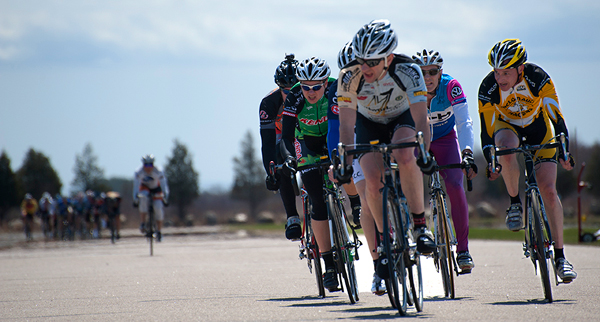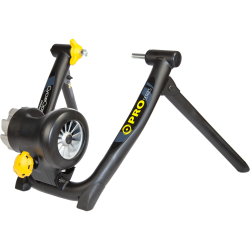The Art of Not Getting Dropped
By Michael Burris
It is the worst feeling in the world. Your tongue’s hanging out. Your sucking the maximum amount of oxygen out of the air and your legs are on fire. You watch the gap between you and the last rider in the group grow larger and larger. You give it one more effort but it is not enough. You are officially “off-the-back.” Away they go and you, well…you can now recover and ask yourself why?
There will always be someone or some groups that are stronger and faster than you. It is important that you ride with those that will push you, or you will not get faster. When you ride by yourself, you are in control. When you ride with others, you have to go hard even when you don’t want to. Unfortunately, it is a double-edged sword; when you ride with fast groups, you do run the risk of “getting dropped.” It is not a good feeling, but it WILL make you better.
I believe strongly that cycling is as much about tactics as it is about fitness. Below I have listed my top 5 ways to stay connected to the group on fast group rides or in races.
#5 Make sure you are training your weaknesses.
If you are like me, time to train these days is at a minimum. I don’t have the luxury of multi-hour rides 6 days a week. I have to be efficient with my training. In my area, most riders get dropped on big rollers that take 1-4 minutes to ascend. These are what I call “power climbs.” Training for these types of efforts is my #1 priority. I usually do sets of 5 or 6 repeats on a hill that takes 3 or 4 minutes to climb. I go as hard as I can, taking equal rest between efforts. I tend to always hit the short climbs with intesity during moderate endurance rides as well.
I am not a good climber, so if I want to stay connected on long climbs I have to really focus on improving my power-to-weight ratio. For me, this is not a high priority because I do not usually ride or race on routes that have big climbs. If you do, you will need to spend considerable time training for this, if it is a weakness. Longer intervals (10-20 minutes) at threshold are good to start with.
Remember, “If you want to ride faster, ride faster.” (Not sure who said that.)
#4 Know the Route
This is key. I get dropped more often when I don’t know the route. How many of us have surrendered during a hard effort only to find out that the crest of the hill was just another 10 seconds of pain? Psychology plays an important role in hard efforts. Telling yourself that the pain will only last another 20 pedal strokes will help, trust me. You can always do more than you think you can. Knowing where on the route you will need to go hard and where you can recover, is important to managing your effort. You can also try and get a little head-start up any incline by riding off the front. This is a bit ballsy though. Make sure you don’t burn up before you crest the uphill or agitate any seriously fast, ego-maniacs that could potentially blow the group apart. For more about this…
#3 Know the Riders
Often times it is difficult to know everyone you ride or race with. You should, however, be able to identify the best riders in the group. This is easy for local riding and racing. Knowing the identity of the best riders will not keep you in contact with the group necessarily, but keeping your eye on them during the ride will help you understand how the ride “works.” Specifically, if you see them come to the front, you should be ready for a surge. A sudden surge at the wrong time has left many a neophyte off the back. Also, being mindful of exactly when and where good riders push the pace will increase your chances of staying connected.
On the flip side…perhaps you are riding with a group of riders that are only slightly better than you (or they think they are better than you). I often ride with cyclists that will hammer up every hill or try and break away from the group constantly. I know that they cannot hold that pace for very long and I need not worry about it. I will either “hold their wheel” (a.k.a. match their pace), knowing they will slow down, or let them go and eventually catch them when they burn up. This can be true for races as well, though it helps to know who does have the ability to get away.
#2 Manage Your Efforts
Understanding your own physiology comes with experience. The more you race or participate in fast group rides, the more you understand what you are capable of. Many coaches refer to the term “matches” when describing this. Anytime you put in a hard effort you burn a match. Each athlete has his/her own number of matches in their matchbook. When they’re gone, they’re gone. Some matches last longer than others, meaning some athletes can go harder for longer. Only you know what you can do. If you feel yourself reaching the brink, back off. You have a better chance of catching the group at the end of the effort, if you save a little for that moment when everybody slows down to recover. If you “pop” you’re screwed even if you manage to stay with the group through the effort.
One classic scenario is when a rider launches an attack at the top, or just before the top of a climb, when weaker riders are gasping for air. Practice accelerating at the top of a climb when training. Even though you’re hurting, stand and go hard for 20 pedal strokes. This will pay huge dividends.
Don’t use up too much energy at points in the ride where you are not in danger. Make sure you save yourself for the hard efforts that might put you in jeopardy. I have watched many inexperienced riders push the pace or ride off the front of a group early in a ride, only to be left in the dust when things get really serious. I have done this myself.
#1 Never apologize or make excuses for getting dropped.
Under no circumstances do you ever say, “If you guys want to hammer, then just go ahead.” It is a different story if you agreed not to hammer at the beginning of a ride or established certain criteria for the ride. For many rides I do, it is agreed that if the group separates, the faster riders will slow down after a climb or hard effort to allow the slower riders to catch-up. Although this can be an ego killer, it is a happy medium. My advice is to take the punishment and tell yourself, “This experience is making me better.”
Always remember why you ride. The only thing you have to prove is that you can improve. Make the most of your training and realize that many of the fastest riders have flexible schedules and little responsibilities which allows them ample time to train. Or, their lives revolve around training and they blow off things they shouldn’t. Focus on yourself and have fun.
mb
For more information about the Burris Logistics – Fit Werx Masters Cyling Team or training and racing in Vermont head on over to www.impulsecyclesport.com.


